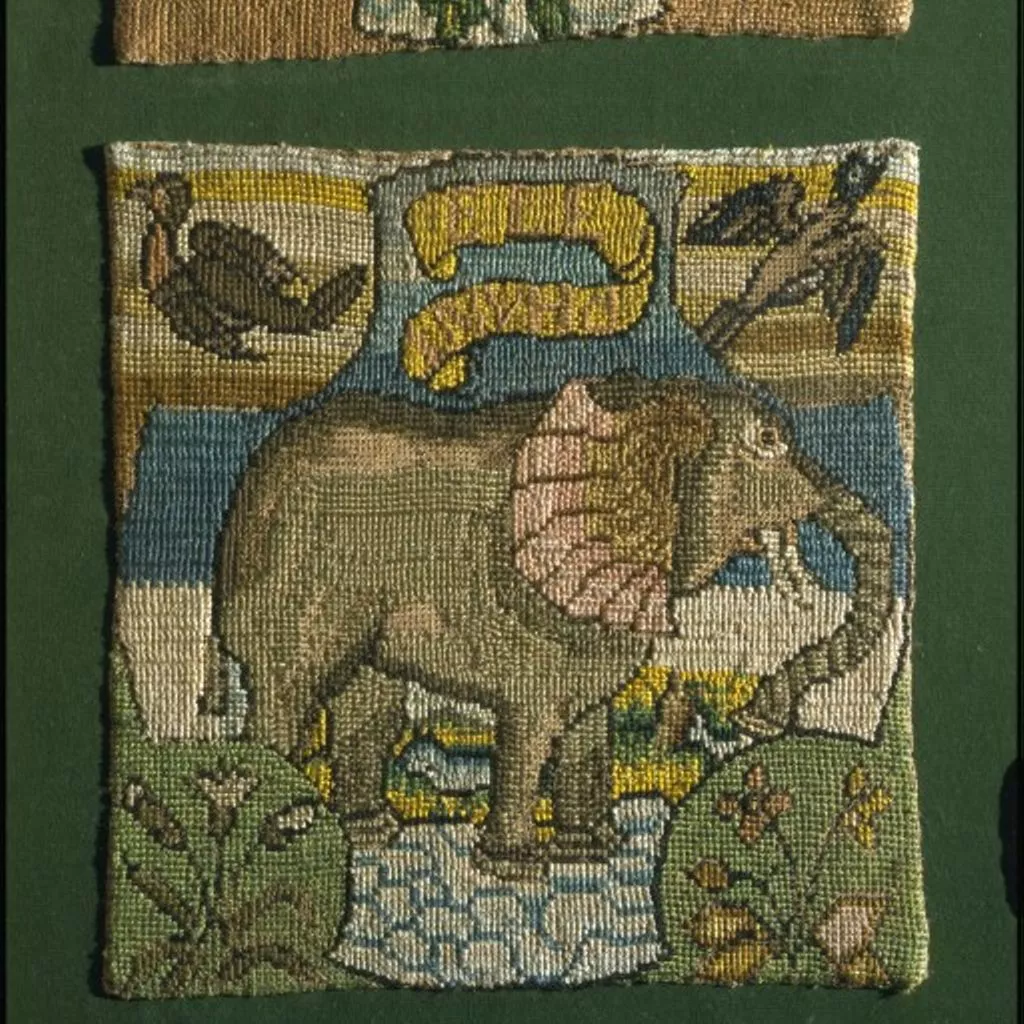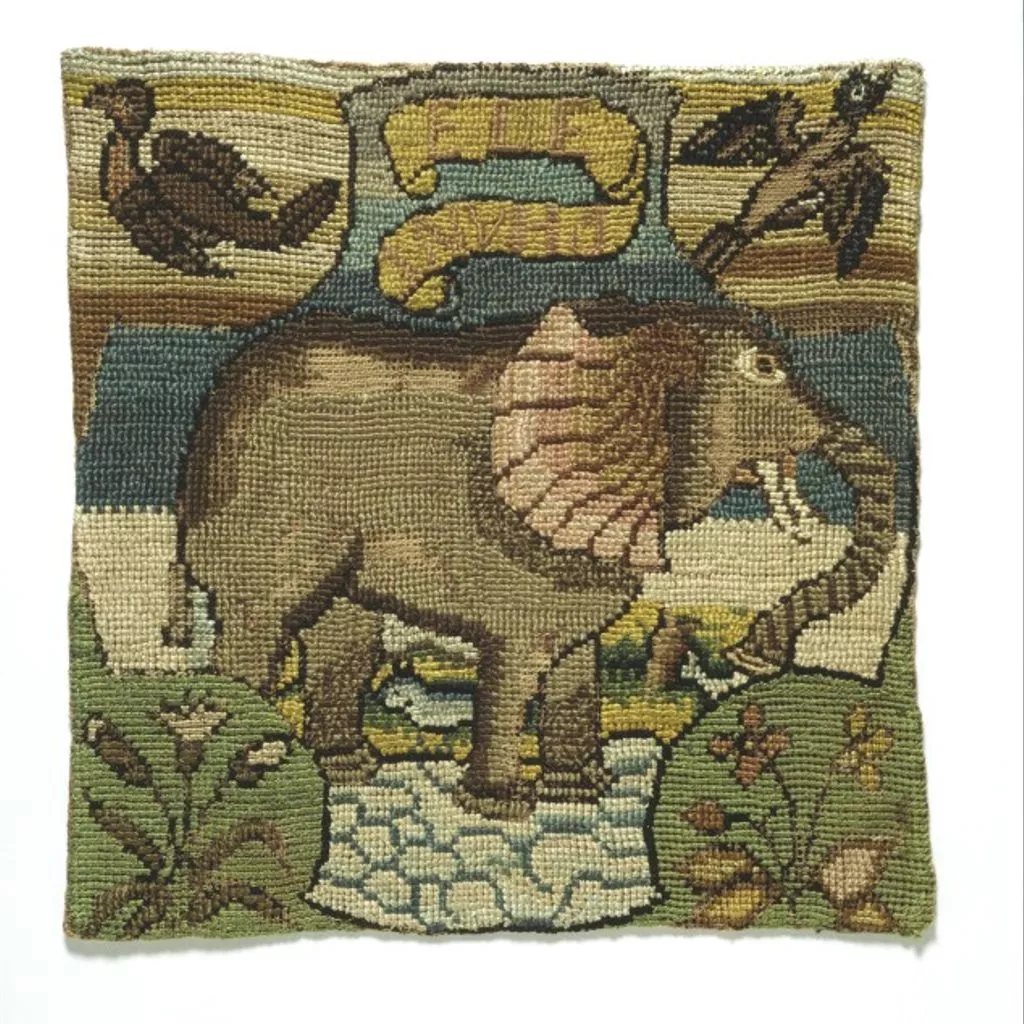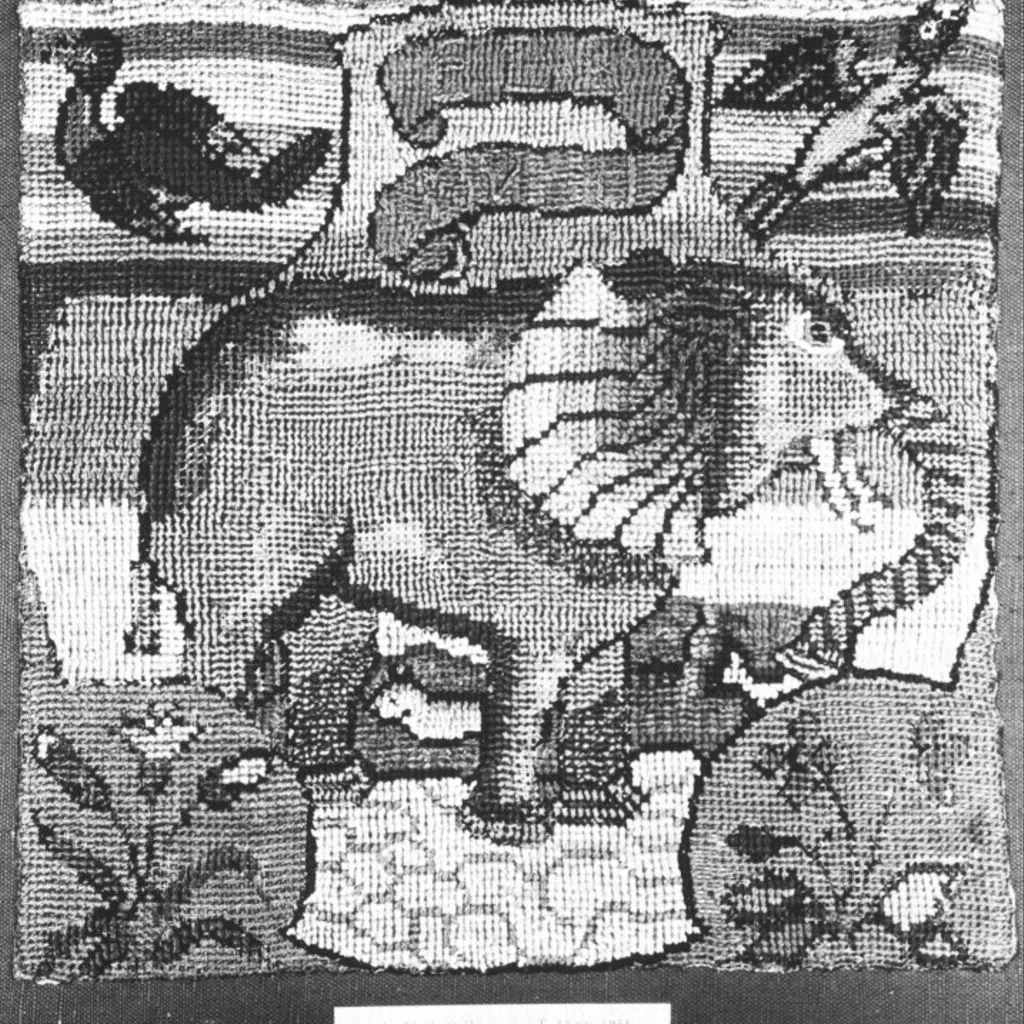1570~, Sheffield
1570~, Sheffield
- Identifier
- T.33GG-1955
- Acquisition
- Presented by Art Fund
- Carried out by
- Mary, Queen of Scots (http://data.silknow.org/activity/designer)
- Collection
- Technique
- Embroidery 68%
- Embroidery 100%
- Embroidery 93%
- Embroidery 97%
- Embroidery 92%
- Depiction
- Floral motif 71%

- Floral motif 67%

- Floral motif 67%

- Floral motif 71%
- Dimension
- 0.5 cm (depth)27.5 cm (height)27 cm (width)
- Production time
- Production place
- Type of object
Description
Mary Queen of Scots' troubled reign in Scotland ended in 1568 when the Scottish Lords forced her to flee across the border into England. As Elizabeth's cousin Mary had long claimed the English throne, leading Elizabeth to see Mary as a threat and place her in the custody of the Earl of Shrewsbury. Mary was held captive in various English country houses for 19 years. She was finally executed in 1587.
Mary Queen of Scots (1542-1587) embroidered these panels with Elizabeth Talbot, Countess of Shrewsbury (Bess of Hardwick) and ladies of the household, during her imprisonment. Mary may have intended the large central panel as a cushion for Philip Howard, Earl of Arundel (1557-1595), an English Catholic courtier imprisoned in London by Elizabeth I. Mary's emblem of the marigold turning towards the sun (lower right) has been combined with various coats of arms and emblems representing courage in adversity. Many other panels from the same group are now at Oxburgh Hall, Norfolk. [27/03/2003] Textile panel 'The Oxburgh Hangings' of embroidered linen canvas with silk, gold and silver threads, made by Mary Queen of Scots and Elizabeth Talbot, probably made in Sheffield, ca. 1570 Textile panel of embroidered linen canvas with silk, gold and silver threads in cross stitch. Embroidered square with a cross shape depicting an elephant (right side view) standing in water on the edge is a partially embroidered jungle (tree on left is half-finished) against a blue sky background. There is a banner inscription which curls around, reading 'ELEPHANT'. Behind the cross in the corners, are two birds in flight and two flower sprigs on green grass. Originally all the panels were applied to a green velvet background, and parts of which survive on the central panel and on several of the smaller panels. Object Type
Making up large decorative hangings from a number of smaller panels which were then applied to a sympathetic background material, was a popular pastime of well to do ladies in the 16th century. This allowed for a group of women to work on individual panels at the same time. If required, the hanging could be dismantled at a later stage and the panels re-used. In the case of this hanging it seems likely that the panels were left unused until the 17th century.
People
It is very rare to be able to identify surviving embroideries as having been owned or worked by royalty. Unfortunately for the doomed Mary, Queen of Scots, she had plenty of time while imprisoned to work on numerous embroideries, some of which have her initials or cipher. This activity must have both filled her time and occupied her mind as many of the emblems or mottoes used have more significance than is immediately apparent.
Subjects Depicted
The elephant is taken from C. Gesner Icones Animalium.





